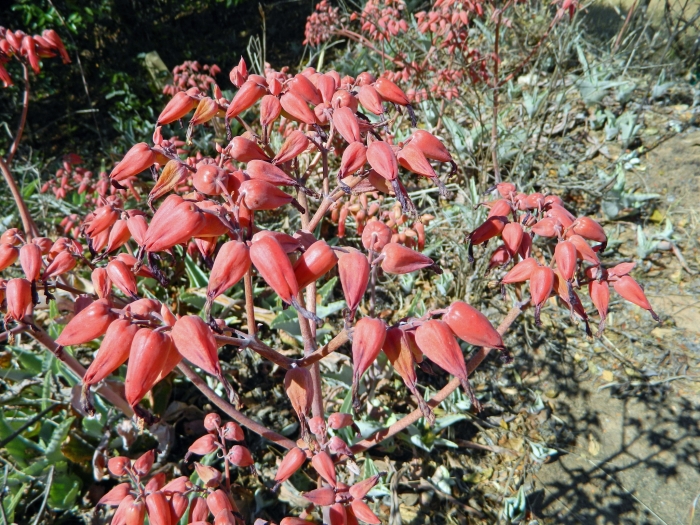Palm Beachbells
(Kalanchoe gastonis-bonnieri)
Palm Beachbells (Kalanchoe gastonis-bonnieri)
/
/

Louis Imbeau
CC BY 4.0
Image By:
Louis Imbeau
Recorded By:
Copyright:
CC BY 4.0
Copyright Notice:
Photo by: Louis Imbeau | License Type: CC BY 4.0 | License URL: http://creativecommons.org/licenses/by/4.0/ | Rights Holder: Louis Imbeau | Publisher: iNaturalist | Date Created: 2019-08-04T13:48:33-07:00 |
























Estimated Native Range
Summary
Kalanchoe gastonis-bonnieri, commonly known as Palm Beachbells or Donkey Ear Plant, is a perennial succulent native to the rocky and sandy soils of Madagascar’s dry forests and bushland. It typically grows to a height of 18-24 inches (45-60 cm) with a similar spread. The plant has a distinctive appearance, with large, fleshy, oblong leaves that are green with reddish-brown spots and often develop tiny plantlets at the tips. The leaves can reach up to 20 inches (50 cm) in length. The flowers are bell-shaped, orange to red in color, and appear on tall, erect inflorescences during the winter months, making them quite showy.
Palm Beachbells is appreciated for its unique foliage and ease of propagation through the plantlets that form on its leaves. It is commonly used in container gardens, as a houseplant, and in xeriscaping due to its low water requirements. In cultivation, it prefers well-draining soil, bright indirect light to partial sun, and minimal watering, making it suitable for gardeners seeking low-maintenance plants. While it is not typically grown for its flowers, the bloom spikes can add a splash of color in the winter. Potential problems include overwatering, which can lead to root rot, and susceptibility to mealybugs and aphids. It is important to be cautious with this plant as it can be potentially invasive in some regions, so always check local guidelines before planting outdoors.CC BY-SA 4.0
Palm Beachbells is appreciated for its unique foliage and ease of propagation through the plantlets that form on its leaves. It is commonly used in container gardens, as a houseplant, and in xeriscaping due to its low water requirements. In cultivation, it prefers well-draining soil, bright indirect light to partial sun, and minimal watering, making it suitable for gardeners seeking low-maintenance plants. While it is not typically grown for its flowers, the bloom spikes can add a splash of color in the winter. Potential problems include overwatering, which can lead to root rot, and susceptibility to mealybugs and aphids. It is important to be cautious with this plant as it can be potentially invasive in some regions, so always check local guidelines before planting outdoors.CC BY-SA 4.0
Plant Description
- Plant Type: Succulent
- Height: 1-1.5 feet
- Width: 1-2 feet
- Growth Rate: Moderate
- Flower Color: Orange, Pink, Red
- Flowering Season: Spring, Fall, Winter
- Leaf Retention: Evergreen
Growth Requirements
- Sun: Full Sun, Part Shade
- Water: Low, Medium
- Drainage: Fast, Medium
Common Uses
Drought Tolerant, Low Maintenance, Potted Plant, Showy Flowers
Natural Habitat
Native to the dry forests and bushland of Madagascar
Other Names
Common Names: Donkey Ears, Miracle Leaf, Life Plant
Scientific Names: , Kalanchoe gastonis-bonnieri, Bryophyllum gastonis-bonnieri, Kalanchoe adolphi-engleri, Kalanchoe gastonis-bonnieri var. ankaizinensis, Kalanchoe gastonis-bonnieri var. ankaizinensis, Kalanchoe gastonis-bonnieri var. gastonis-bonnieri,
GBIF Accepted Name: